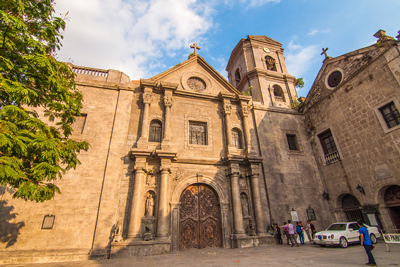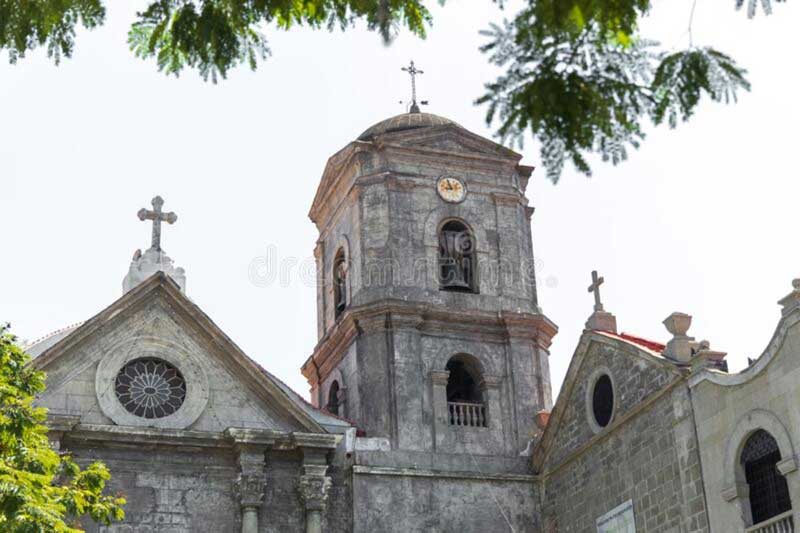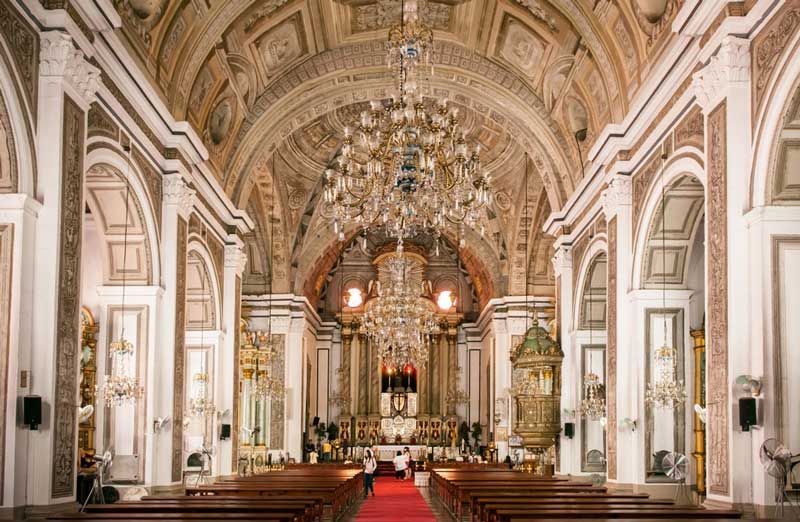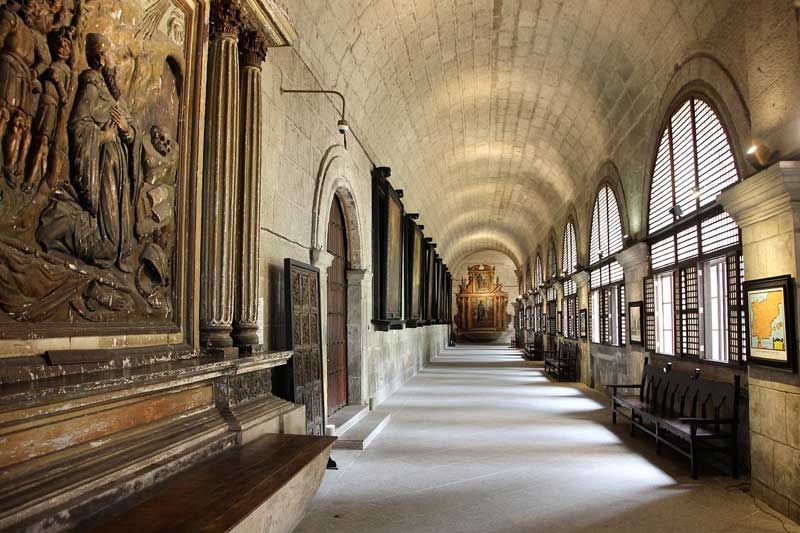
Located on General Luna Street, inside the historic walled area within the City of Manila, San Agustin Church, also known as Immaculate Conception Parish, was formally declared complete on 19 January 1607 and named Church of St Paul of Manila,under the auspices of the Order of St Augustine. Strongly resembling Puebla Cathedral in Puebla, Mexico, it is the oldest stone church in the country that has survived seven major earthquakes, including a major earthquake in 1863.
It is also the only church that survived the levelling by combined American and Filipino ground forces in May 1945, during the Battle of Manila, a major battle at the time of the Second World War, while the adjacent monastery was completely destroyed. Enlisted as a National Historic Landmark by the Philippine government in 1976, San Agustin Church in Manila was declared a UNESCO World Heritage Site in 1994, under the collective title Baroque Churches of the Philippines.

For the last 400 years, the church has witnessed many historical events of Manila, beginning with the burial of the Spanish conquistador Miguel Lopez de Legaspi, the founder of Manila on this site. After that,when the Spanish surrendered to the Americans in 1898, the terms of surrender were negotiated by Spanish Governor General Fermin Jaudenes in the vestry of the church. Much later, when the Americans retook Manila from the Japanese in 1945, the retreating Imperial forces committed atrocities on this spot, brutally massacred several innocent and unarmed clerics and worshippers within the crypt of the church.

The present building of the San Agustin Church is the third church erected on the site by the Augustinians, who follow the Rule of Saint Augustine, written by Augustine of Hippo, around 400 AD. The Spaniard Augustinians were the first missionary order that arrived in Philippines and established the first San Agustin Church on the island of Luzon, the home to the country's capital city, Manila. But the small church, made of thatch and bamboo and christened the Church and Monastery of Saint Paul in 1571, did not last long and was destroyed by fire in December 1574, when the Chinese pirates and warlords, called Limahong, invaded Manila to conquer it.
Unfortunately, when a candle ignited the drapery on the funeral bier, the second wooden structure of the church, built on the same spot, was also completely devoured by fire in February 1583. After the concurrent disastrous incident of fire, the Augustinians decided to build a new structure for the church made of stone, along with a monastery. Based on the design of Juan Macias, the process of construction began in 1586 and although the work proceeded slowly due to the lack of funds, materials, as well as a scarcity of expert stone artisans, the monastery became operational by 1604 and the church was formally declared complete three years later, in 1607.

The massive façade of the San Agustin Church in Manila conceals an ornate interior filled with objects of great historical and cultural heritage. Built in a Spanish-Mexican baroque style, with some Chinese and Philippine elements added to it, the ambience of the San Agustin Church in Manila is medieval, since it symbolises the majesty and at the same time represents a Spanish golden era. It contains stunning frescoes, the Trompe-l'oeil murals on the ceiling and the walls, a vaulted ceiling and a dome. Apart from that, it is adorned with several paintings, statues and numerous church ornaments, which are a feast for the eyes. While a gilded retablo takes the centre stage at the far end of the church, the pulpit, the raised enclosed platform from which the preacher delivers a sermon, is also gilded and decorated with pineapple and flowers. The room, where a priest prepares for service and known as the Sacristy, showcases more prosaic items, which include Chinese chest drawers, Aztec doors and more religious art.

A bell tower, damaged by an earthquake and containing a 3-ton bell, stands guard at the entrance of the church and the receiving hall, called Sala Recibidor, now houses ivory statues and jewelled church artefacts.

The monastery, located adjacent to the church and destroyed during the Battle of Manila in May 1945, was rebuilt in the 1970s, as a museum under the design of architect Angel Nakpil. The amazing museum, adorned with the mother of pearl windows, is a treasure trove, which takes the visitors to the medieval years.
It has several impressive galleries, displaying a proud collection of antiques relating to different saints, statues and sculptures of Mama Mary and other saints and collections of memorabilia for the Catholic Church since the time Spaniards invade Philippines. The galleries, divided into several categories, which include the love of nature, science and others, have turned the museum into a magnificent collection of ecclesiastical relics and art.